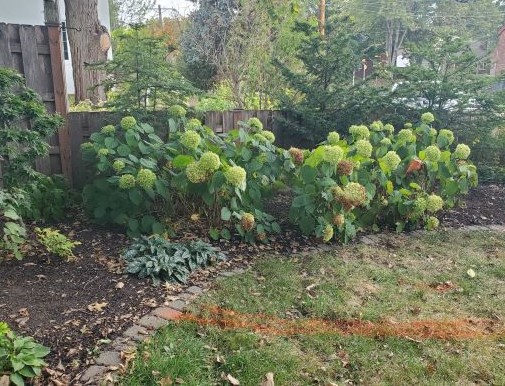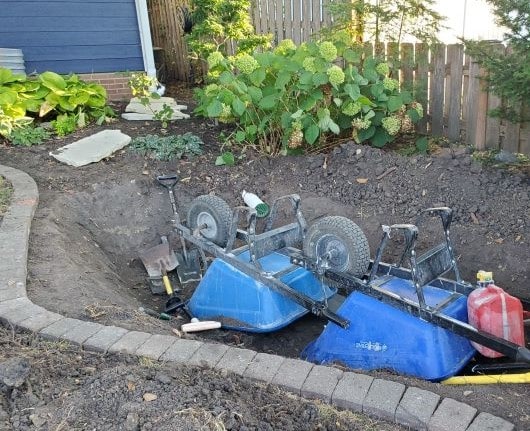Rain gardens offer so many benefits. These specially designed gardens filter pollutants from runoff, conserve water, remove standing water from your yard, and help keep water from potentially damaging your home, just to name a few.
Located in the heart of Des Moines, this cozy little front yard gave us the opportunity to install a rain garden. With its limited lot size, the home’s downspout and sump pump had no where to go during a heavy rain. A section of PVC was installed underground, connecting the two to an area about 15′ away from the foundation of the house. The existing soil was excavated about 24″ deep to be replaced with a sand, soil, compost mix. This is essential for good drainage. Without amending the soil, the garden would have had issues with heavy rains and draining fast enough, creating overflow and potential flooding. Measuring the square footage of the roof determined the size of the rain garden. A special formula will calculate this. It is also essential to create a shallow depression. The rain garden is not to be level with the existing landscape. In a heavy rain as the waters rise, a rain garden will contain the water with its shallow depression, and slowly filtrate it back into the soil. Planting native plants will also help with the water absorption and filtering water as they have a more extensive root system than non-native plantings. With this particular installation, New Jersey Tea Shrub was planted in the rain garden.

Hydrangeas, turf grass and assorted shade perennials occupied the space before it was transformed into a rain garden.


The rain garden has been completed. Native plants such as New Jersey Tea shrub have been planted to help absorb water and filter the water back into the ground. Mexican beach pebbles are used decoratively but also functionally as they will help prevent mulch from washing into the yard. They also give the appearance of a babbling brook.
